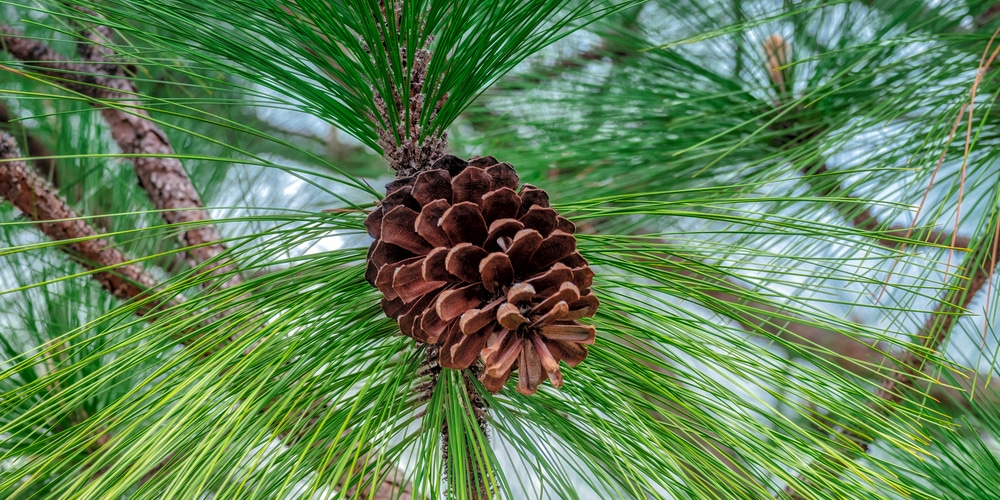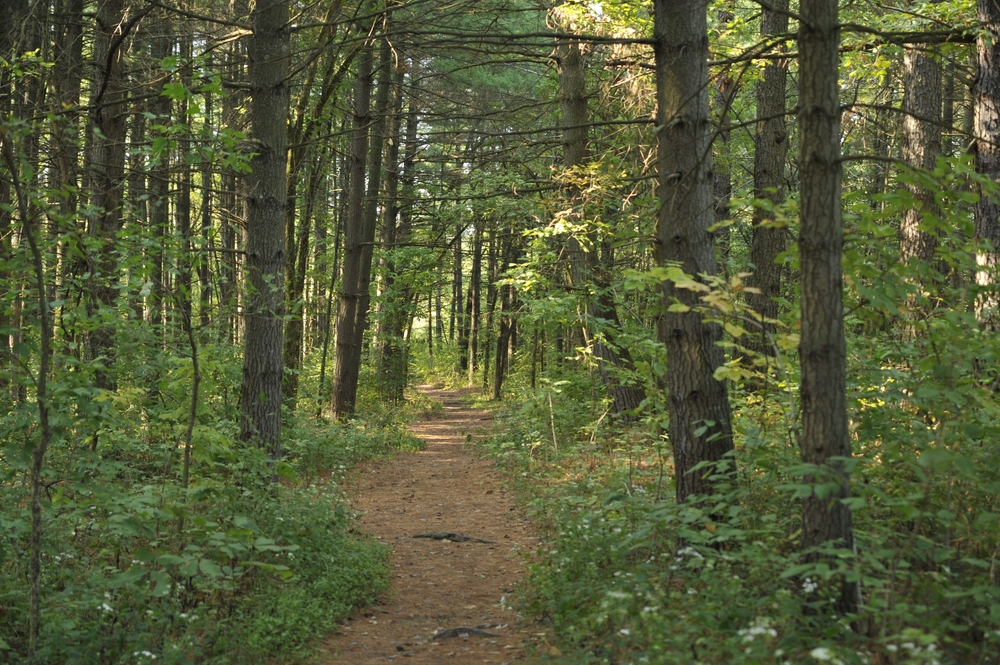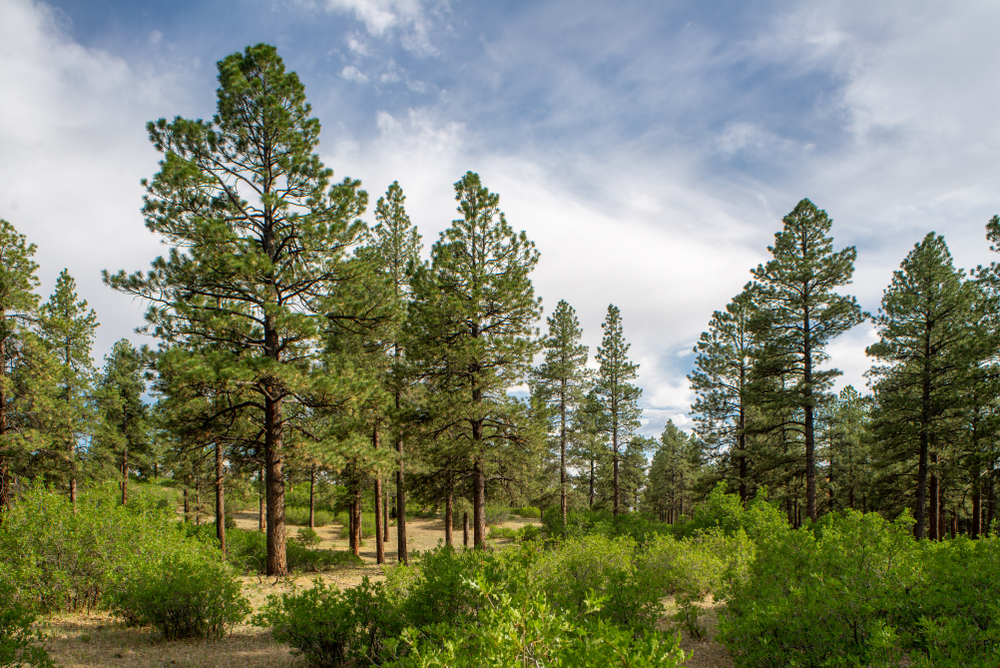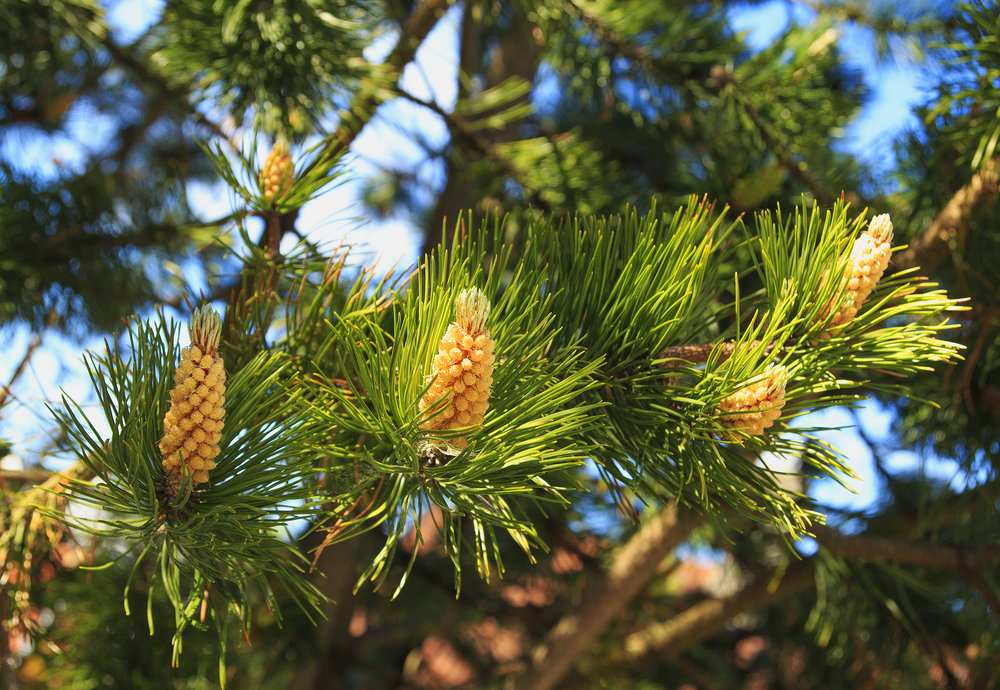Despite the fact that the southern pine tree is most often associated with the east coast state of North Carolina (in which the pine is, in fact, the state tree), pines are widespread in the great state of Texas. Don’t let the state’s official tree (the pecan) fool you–there is a multitude of different pines, all of which contribute to the tapestry of Texas’ floral totality. If you’ve ever wondered about all the pine trees you can find in Texas, you’ve come to the right place.
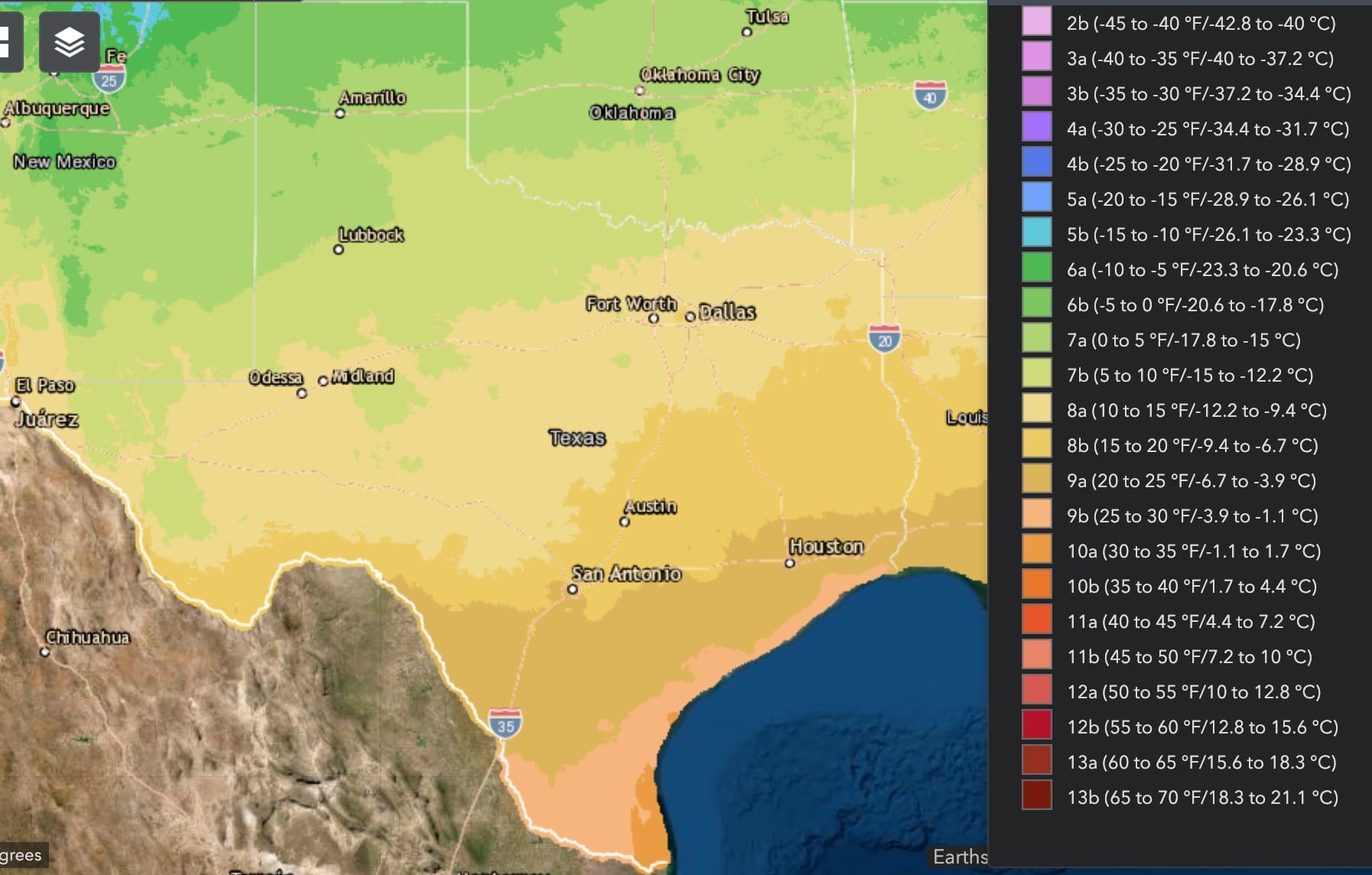
In this article, we’ll break down all the major pine tree varieties you can find in the Lone Star State, along with details about their distribution and favored conditions.
Pine Trees in Texas
Here are five of the best species of pine tree to grow in Texas. These trees will thrive in the Texas climate:
Longleaf Pine
The most prominent Texan pine is an absolute icon of southern conifers: the longleaf pine.
This majestic arbor is as elegant as it is tall–which is to say, pretty darn tall. Towering at a height of up to 115 feet but with a diameter of just under 30 inches, the longleaf pine is an icon for beanpoles and lanky folks everywhere–proof that no matter how skinny you are, you can still be strong.
These pines are especially common in eastern Texas, with their total range stretching through Florida, the Carolinas, and Virginia. Three cheers for the longleaf pine!
Shortleaf Pine
The next pine on our list certainly lives in the shadow of the longleaf, both figuratively and metaphorically.
Despite the diminutive stature implied by their name, the shortleaf pine can grow rather large–reaching heights of 100 feet, in fact. The distinguishing factor of the shortleaf pine is, as its name suggests, its short leaves: compared to the 18-inch leaves on the longleaf pine, this East Texas pine sports leaves of only three to five inches.
Still, no matter what anyone says about size, it remains an indisputable fact that the shortleaf pine is close to any pine lover’s heart.
Ponderosa Pine
Also known as the blackjack pine, the bull pine, or the western yellow pine, the Ponderosa pine is known to pine lovers everywhere as the globetrotter of the pine family. Besides its extremely widespread popularity in the continental United States, the Ponderosa Pine has also taken up residence in British Columbia, Europe, and New Zealand. Talk about being well-traveled!
When it comes to Texas, however, the Ponderosa pine is as much at home as any other conifer. It is most commonly at home in the Chisos Mountains, as well as Guadalupe. They can tower to heights of up to 200 feet and sports leaves that get up to 10 inches in length.
Pinyon Pine
If you’re an American who has ever enjoyed the sumptuous delights of a pine nut, you probably have the pinyon pine to thank for it.
Not to be confused with the stone pine of Europe, which also produces pine nuts, the pinyon pine is a common sight in the far west of Texas and New Mexico. These squat little trees (they typically grow only 20 feet tall) have short, pale leaves and grow in a triangular shape.
The most common pinyon in Texas is pinus remota, the paper shell pinyon, which is especially common in southwestern Texas and northern Mexico. Historically, the tree was quite important, representing a significant food source for the indigenous peoples of southwest North America.
Eastern White Pine
The white pine is a mighty tree befitting its regal name: it measures up to 100 feet in height, and its wide silhouette gives the impression of a proud person opening their arms to the world.
As its name suggests, the Eastern White Pine is most noteworthy for its color–though the interesting coloration isn’t just in the ivory color of their wood, but in the blue-gray tint of their stately leaves.
The strength and rarity of the white pine made it a valuable commodity in early American history, leading to the deforestation of many virgin forests–though thankfully for arborists everywhere, the white pine was able to bounce back and hold on to its iconic status.
Final Thoughts
There are a great many trees to love in Texas, and this list represents just a few. Did we miss your favorite pine? Which of the icons on this list reigns supreme?
Pine trees are fast growing in the right conditions and can be added to your Texas yard.
